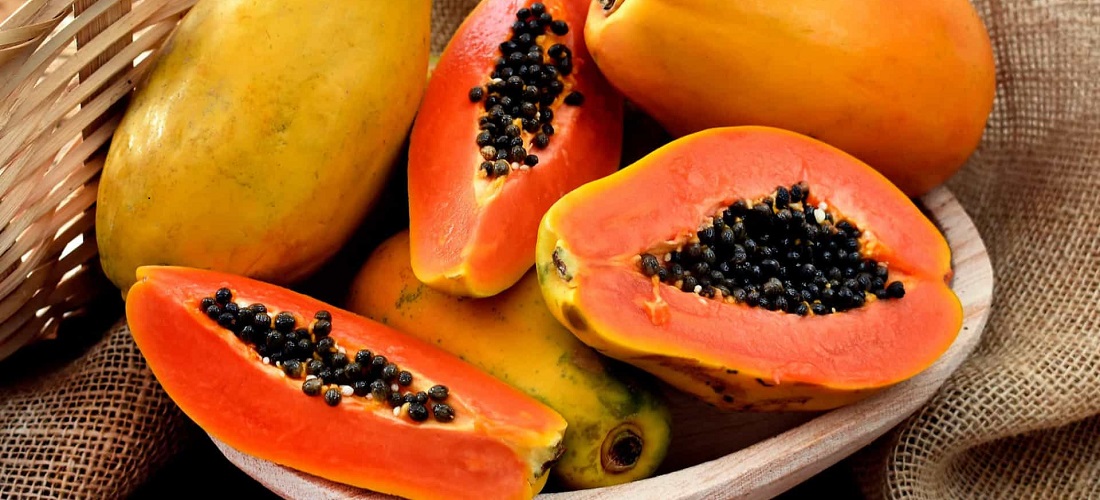
Espírito Santo Leads Papaya Exports in 2024 with a 35% Increase and Revenue of $28.3 Million
Jan, 31, 2025 Posted by Denise VileraWeek 202505
In 2024, Espírito Santo increased its papaya exports by 35.94%, totaling 19.4 thousand tons. Revenue reached $28.3 million, marking a 34.67% growth compared to the previous year, equivalent to approximately R$ 167.7 million at the current exchange rate.
Although the exported volume remained below the 2021 record of 24 thousand tons, the revenue was the highest ever recorded by the state.
Espírito Santo Leads with 44% of Brazil’s Exports in 2024
On a national level, Brazil exported 44 thousand tons of papaya in 2024, a 16.2% increase compared to 2023. Total revenue reached $58.1 million, up 9.5% from the previous year.
The leading exporting states were:
- Espírito Santo (44%)
- Rio Grande do Norte (33%)
- Bahia (8%)
- Paraíba (8%)
The top destinations for Brazilian papaya were:
- Portugal (30%)
- Spain (16%)
- United Kingdom (17%)
According to Conab, the increase in national supply, especially in the second half of 2024, helped sustain strong export demand.
“This growth is not only due to higher supply but also to the fruit’s high quality and strong demand, particularly from Europe, the main buyer of Brazilian papaya, sourced from Espírito Santo, Bahia, Rio Grande do Norte, and Ceará,” Conab reported.
Higher Added Value Despite Lower Export Volumes
José Roberto Macedo Fontes, president of the Brazilian Association of Papaya Producers and Exporters (Brapex), highlighted that while the 2024 export volume did not surpass 2021, the increase in added value was significant.
“The major achievement was the increase in added value. In 2021, Brazil exported 50.2 thousand tons and earned $50.6 million. In 2024, with a lower volume, we still reached $58 million. This demonstrates an improvement in how Brazilian papaya is marketed abroad,” Fontes explained.
He also noted that, in the early 2000s, Espírito Santo had record export volumes but much lower revenues. For example, in 2003, the state exported 27.4 thousand tons but earned only $20 million.
Logistical Challenges and Changing Producer Profiles Impact the Sector
Despite positive results, the sector faces challenges. A key issue is the changing profile of producers, as many are primarily focused on coffee farming, which has impacted papaya production.
“Many of today’s production comes from farmers whose main focus is coffee in northern Espírito Santo and southern Bahia. If more producers were dedicated exclusively to papaya exports, we could have increased the volume and revenue even further,” Fontes commented.
Logistics also remain a concern. Currently, nearly all papaya exports rely on air transport via commercial flights. However, pandemic-related restrictions, such as reduced flights, have impacted the sector.
“The return of maritime logistics would allow for larger export volumes, although air transport adds value due to its faster delivery,” he added.
As a perishable product, papaya requires special handling to maintain freshness. Various agro-export strategies are being used to extend shelf life.
2025 Outlook: Gradual Growth and Climate Considerations
Expectations for 2025 point to gradual growth in both volume and revenue. Normalizing transport routes should help boost exports, although significant surges are not anticipated.
Climate conditions will also play a crucial role. In 2024, production benefited from well-distributed rainfall.
“If 2025 follows this trend, we expect increased production and fruit quality. However, we remain cautious about viral diseases affecting the state’s plantations. These viruses cannot be controlled with chemicals, and the only solution is cutting infected plants, which reduces cultivated areas and total production,” Fontes warned.
Rio Grande do Norte, Brazil’s second-largest producer, also increased its market share in 2024, particularly with Formosa papaya exports. However, Espírito Santo remains the clear leader, with a wide margin.
In 2024, Rio Grande do Norte exported 14.8 thousand tons of papaya and generated $17.2 million, significantly less than Espírito Santo.
Espírito Santo: Brazil’s Largest Papaya Producer and Exporter
Espírito Santo stands out as Brazil’s top papaya producer and exporter. In 2023, the state produced 352,000 tons, generating R$1.1 billion in revenue. The fruit was exported to 37 countries, with Portugal, the United Kingdom, and the United States as the main destinations.
The most important papaya-producing municipalities in Espírito Santo include:
Pinheiros, Montanha, Linhares, São Mateus, Boa Esperança, Pedro Canário, Sooretama, Vila Valério, Aracruz, and Jaguaré.
Source: Folha Vitória
-
Ports and Terminals
May, 04, 2023
0
Massive drug trafficking operation busted in Paranaguá, Brazil
-
Automotive
Oct, 06, 2023
0
Production, sales and exports of vehicles dip in Brazil, warn automakers
-
Trade Regulations
Mar, 05, 2025
0
Industry Comments on Retaliatory Tariffs on U.S. Pork and Beef
-
Aug, 22, 2022
0
Foreign ministers of Chile, China highlight bilateral ties and FTA



